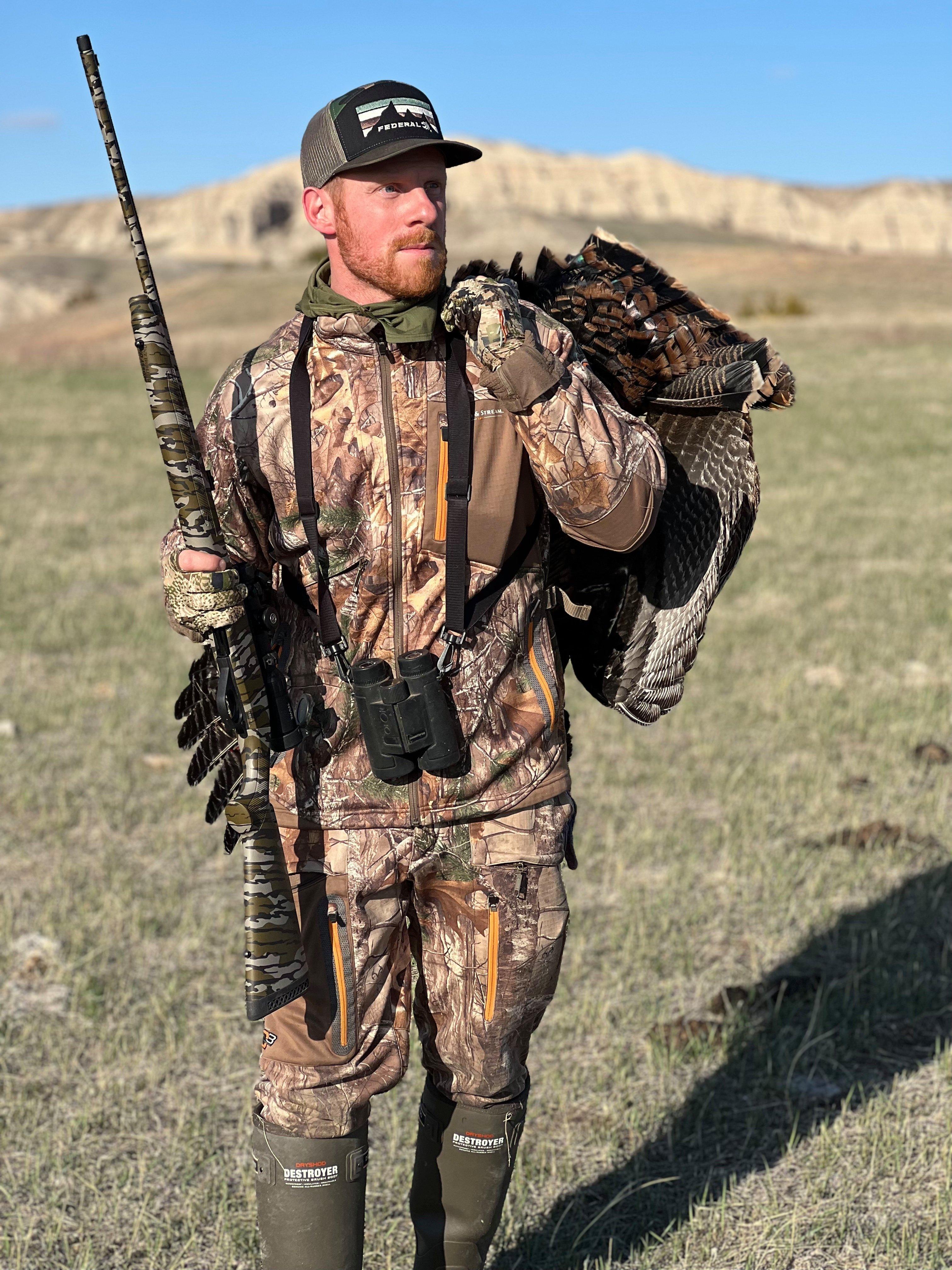Midwest gobblers are responding well to calling and decoys, while Plains birds are a little more resistant to conventional tactics

Five-year-old Cruze Hosie took his first turkey ever during the Pennsylvania youth hunt under the mentorship of his parents, Nate and Tiffany Hosie. Image by Nate Hosie
I just completed my South Dakota shotgun hunt, and I have a couple days left to bowhunt before heading home. Toms are gobbling hard on the limb but becoming very henned-up in the mornings and again late in the afternoons. While sitting stationary over decoys with the bow in the mornings and afternoons, toms were unwilling to fight my jake decoy.
So, I pulled the jake from the mix one morning, and the entire flock — five toms, a jake, and multiple hens — came in to my feeding and laying hen decoys. Unfortunately, I flubbed the shot. Still, the hen decoys brought the hens in, which brought the boys in, too. With the little time I have left to bowhunt in South Dakota, I’ll most likely be finishing my hunt with hen decoys only.
I was fortunate enough to take two birds with my shotgun. Turkeys were visible virtually all day long, feeding on the prairies when the wind wasn’t roaring and occupying the river bottoms on the breezier days. Stalking and fanning were the primary tactics, and they proved extremely effective for several hunters in the group, me included. Neither of my two toms came charging, but they came close enough for nice, easy shots. I expect Plains toms to gradually free up and respond better to calls and decoys as more and more hens go to nest in the coming weeks. I noticed that many toms would split from the hens late in the morning and then reunite at around 4 p.m. Thus, the midday window is a great time to call in a roaming tom or three.
My wife has been giving me similar reports from back home in Wisconsin while I’ve been away. She’s been seeing male birds on the move throughout the day. Further, a Wisconsin friend posted to Facebook that his mother shot a tom just a little while after 11 a.m. a few days ago. They’d just sat down on a field edge and called, and three toms immediately came in.

McDougal recently took two gobblers including this one while hunting in South Dakota. Conventional tactics of calling and hunting over a jake decoy weren’t very effective, so stalking and fanning yielded the success. Image by Darron McDougal
Nate Hosie of Head Hunters TV has recently been stomping around in Ohio and Pennsylvania. “The Pennsylvania youth hunt was a dream come true,” he said. “I yelped a jake in for my 5-year-old boy, Cruze. It was his first turkey. Turkeys were gobbling hard and worked good in the timber. Ohio was great, too. My buddy, Brian, and I both punched a tag. The toms seemed to work better later in the morning once they left the hens. They gobbled good and worked nice to the call.”
Joel Burham of Whitetail Fit has been hunting down in Missouri and also has found receptive birds. “The birds are responding very well to calls and decoys,” he said. “I haven’t killed a bird yet, but several of my buddies have. Most of those birds were on the decoys right off the roost. We have mostly been using a jake decoy over a laydown hen decoy. I believe the ticket right now is to get tight to the roost and present competition with a jake decoy. I recently noticed a tom chasing a jake away with hens present. Soft calling to pique interest and then staying quiet has been my go-to calling strategy.”
Meanwhile, you might recall from last week’s report that Hans Walthert of New York was hunting in Maryland. Well, two days after submitting my report, he texted me pictures of a buddy and himself with gobblers they’d taken. He said that his bird gobbled hard from the roost and for a little while after flying down, but that the bird went silent for about 40 minutes. Being patient paid off as the tom slowly worked in.
Carter Heath is the NWTF’s New England regional director, and he provided input regarding the coming openers in the Northeast. “Due to cool, rainy conditions, gobbling this past week was chilled out,” he said. “With another wet week forecast for the opener and beyond for many states of northern New England, we’ll see how the weather and possibly fewer hunters in the woods frames things for the second week of the season. If we get some rare peeks of sunshine, make sure you’re out there to capitalize.”










